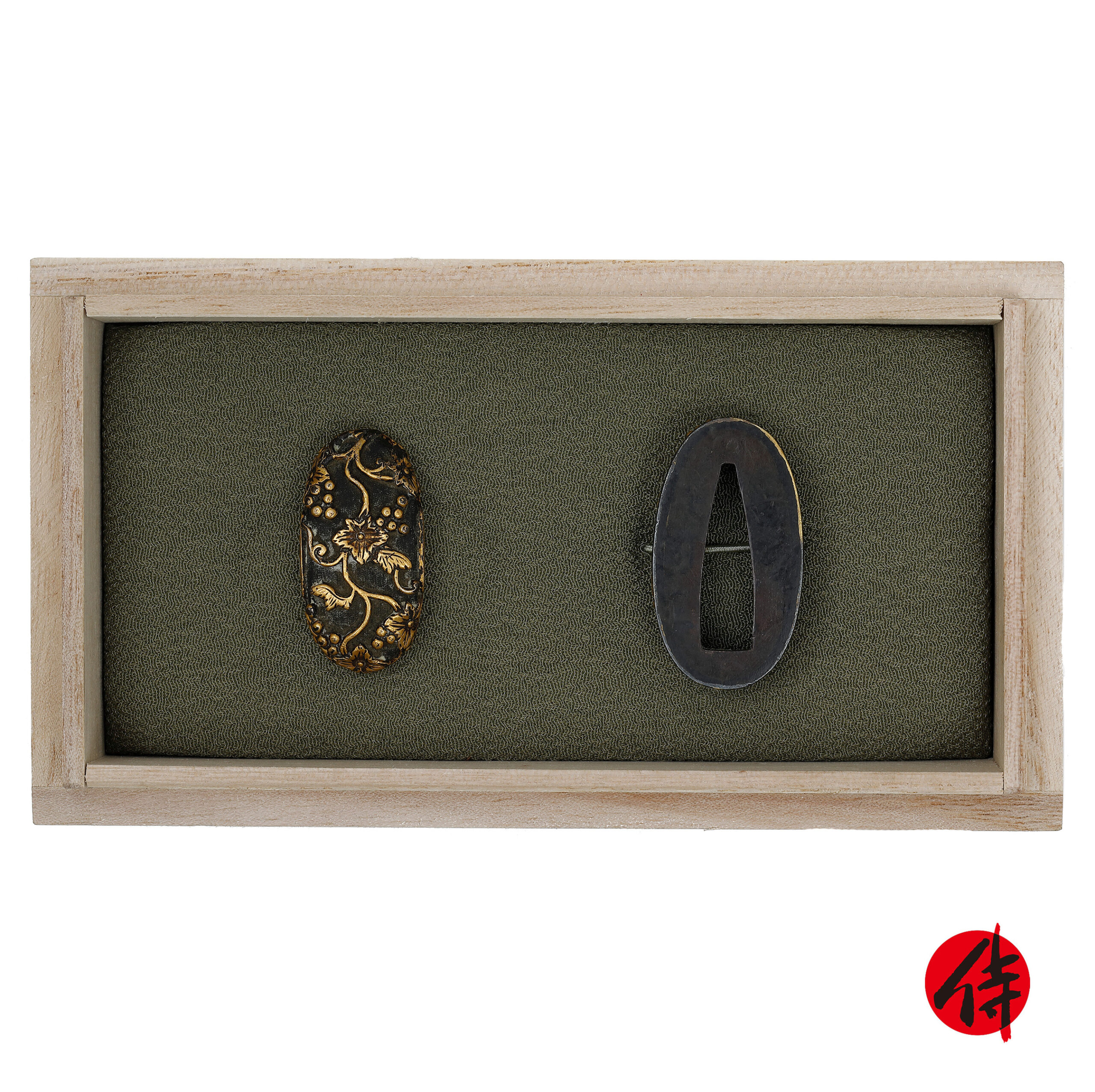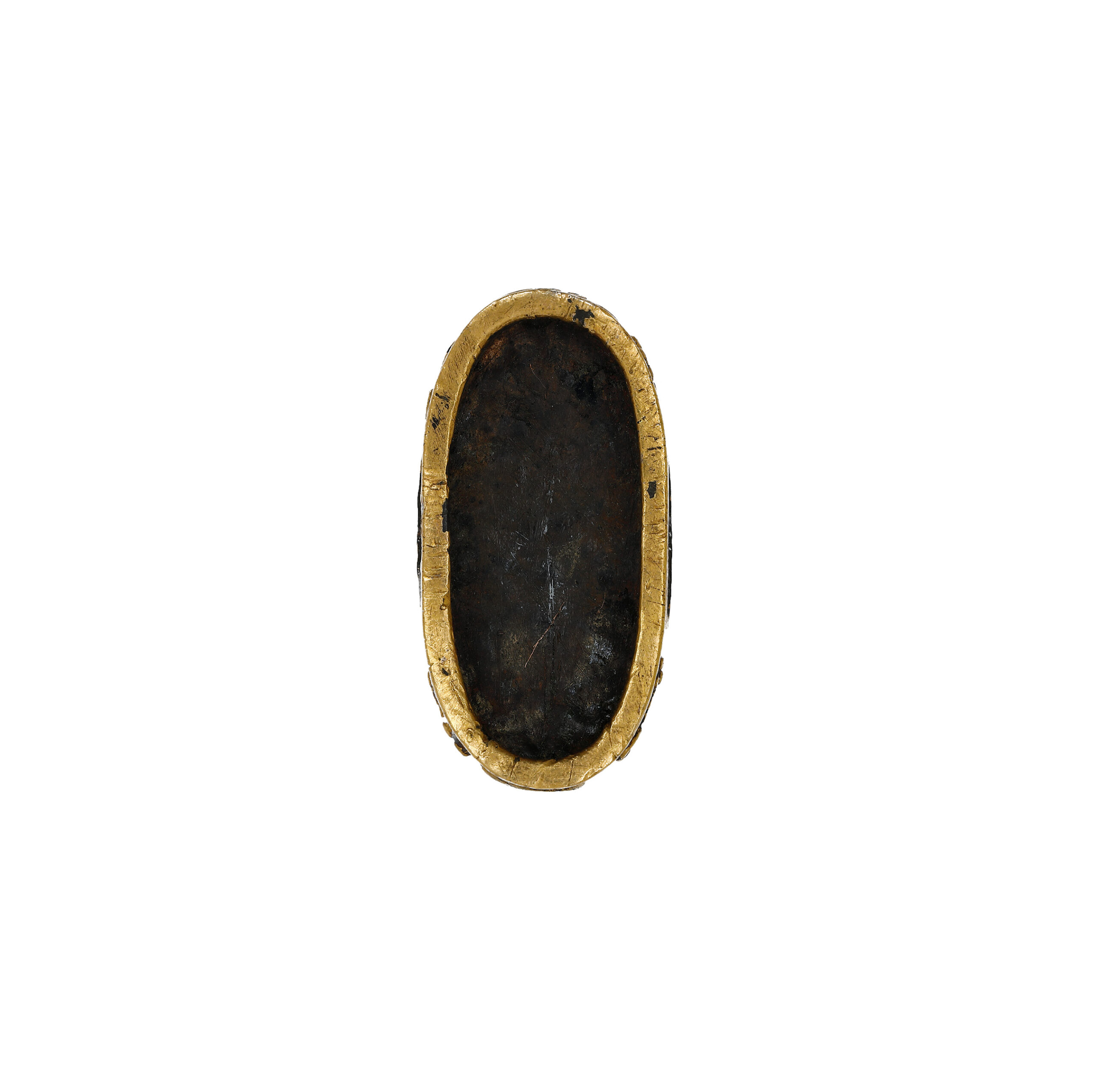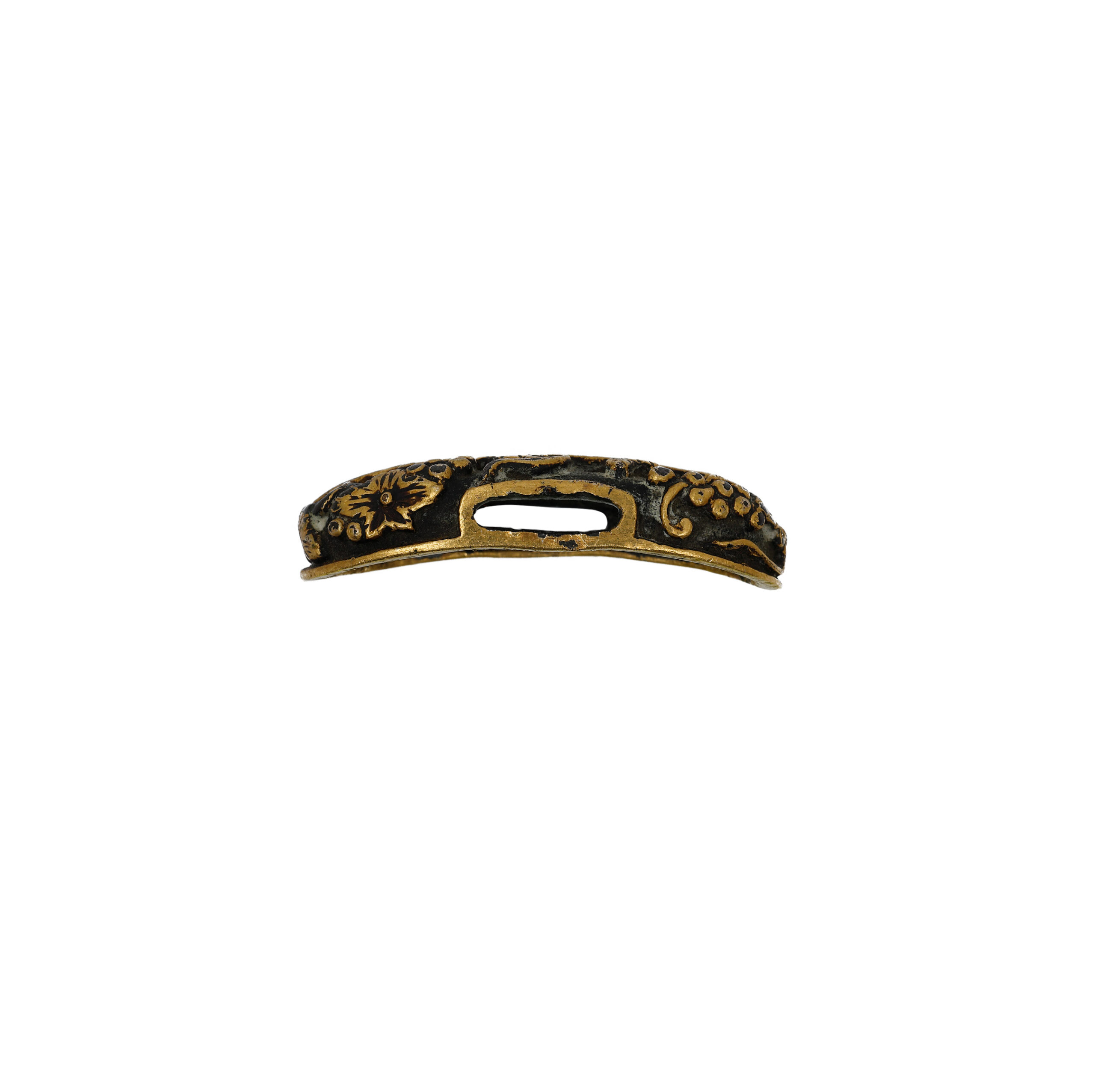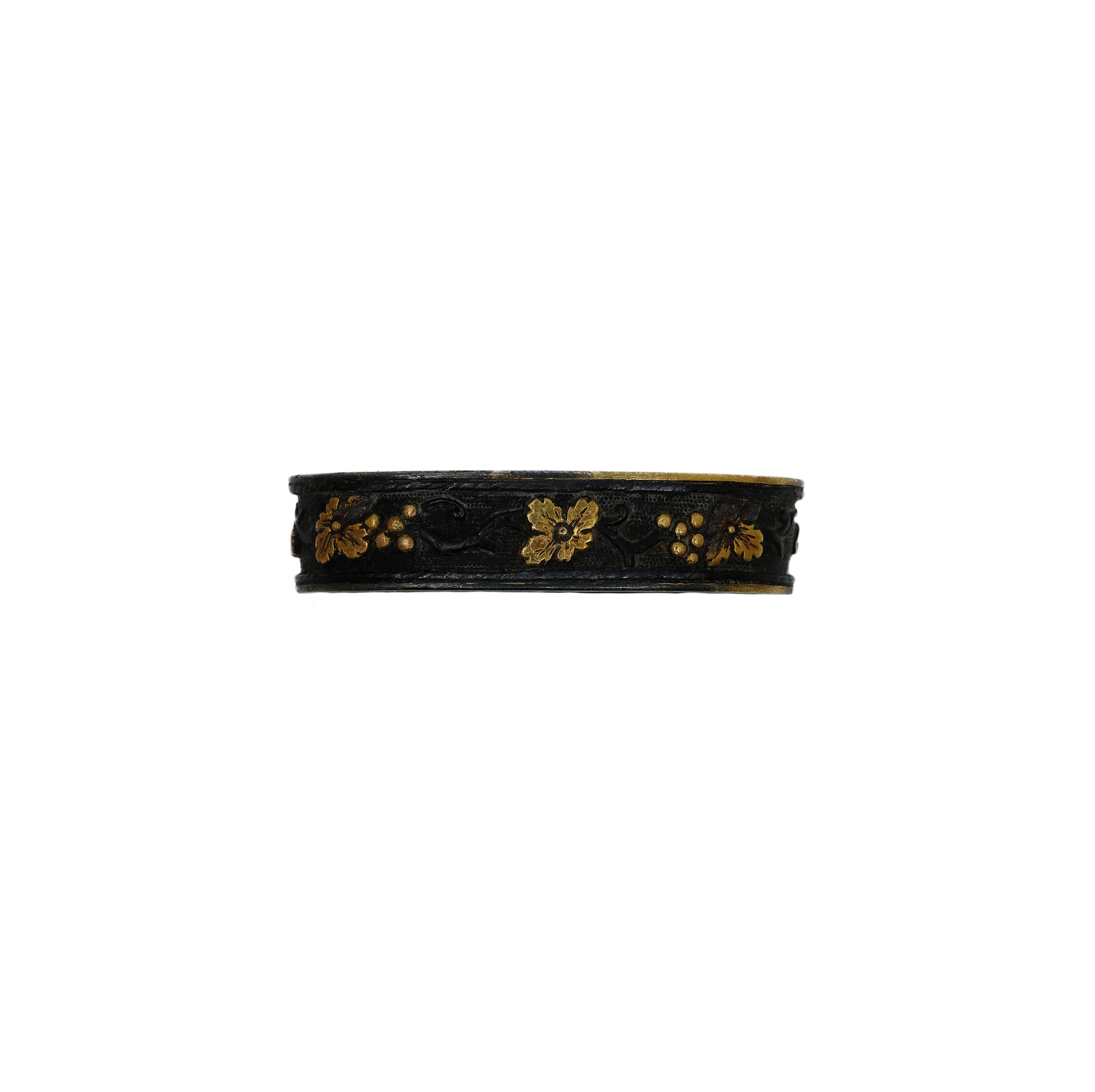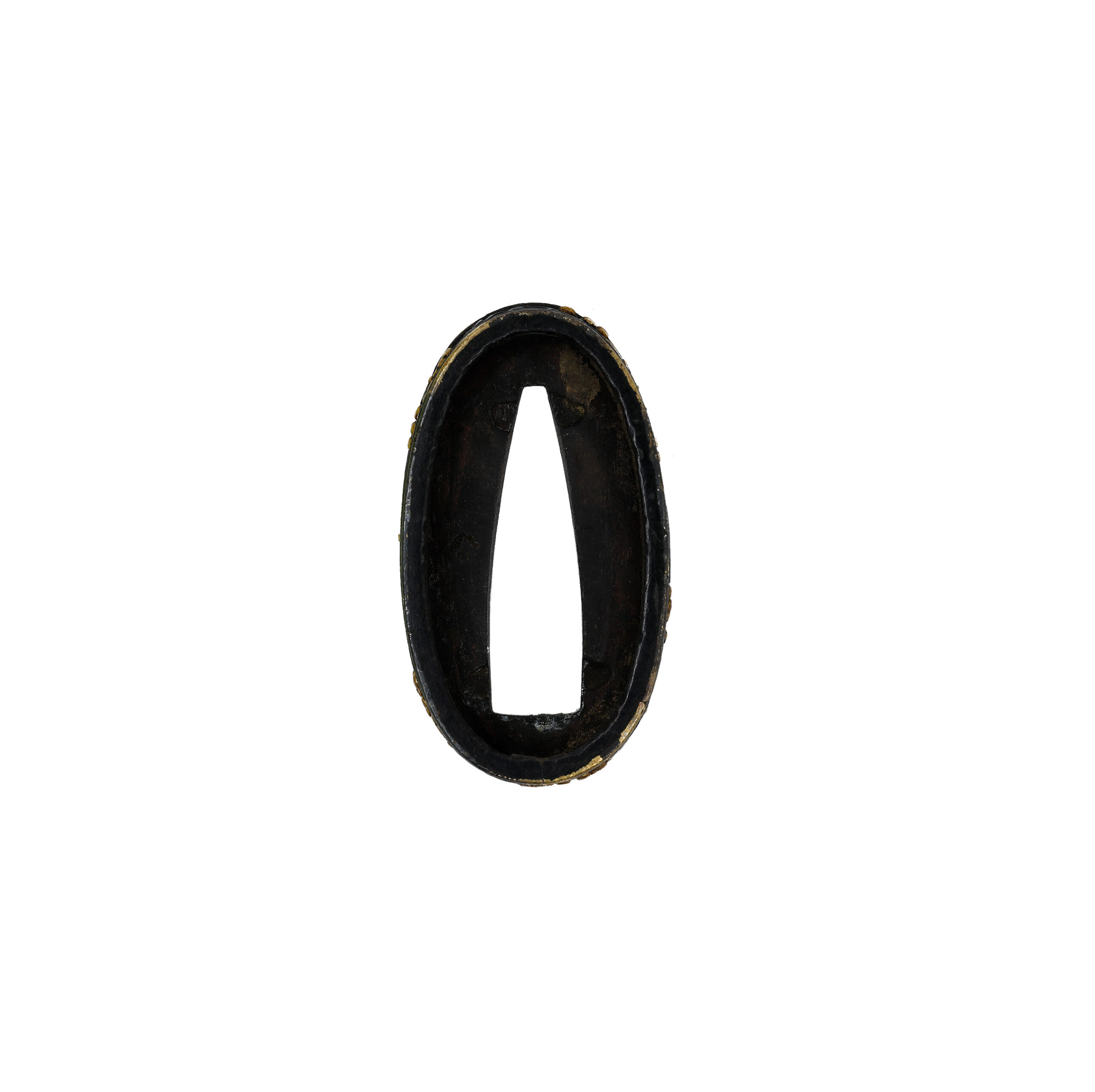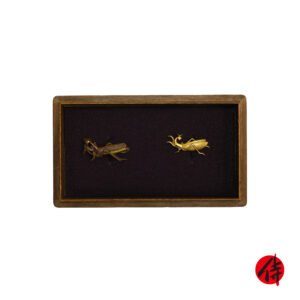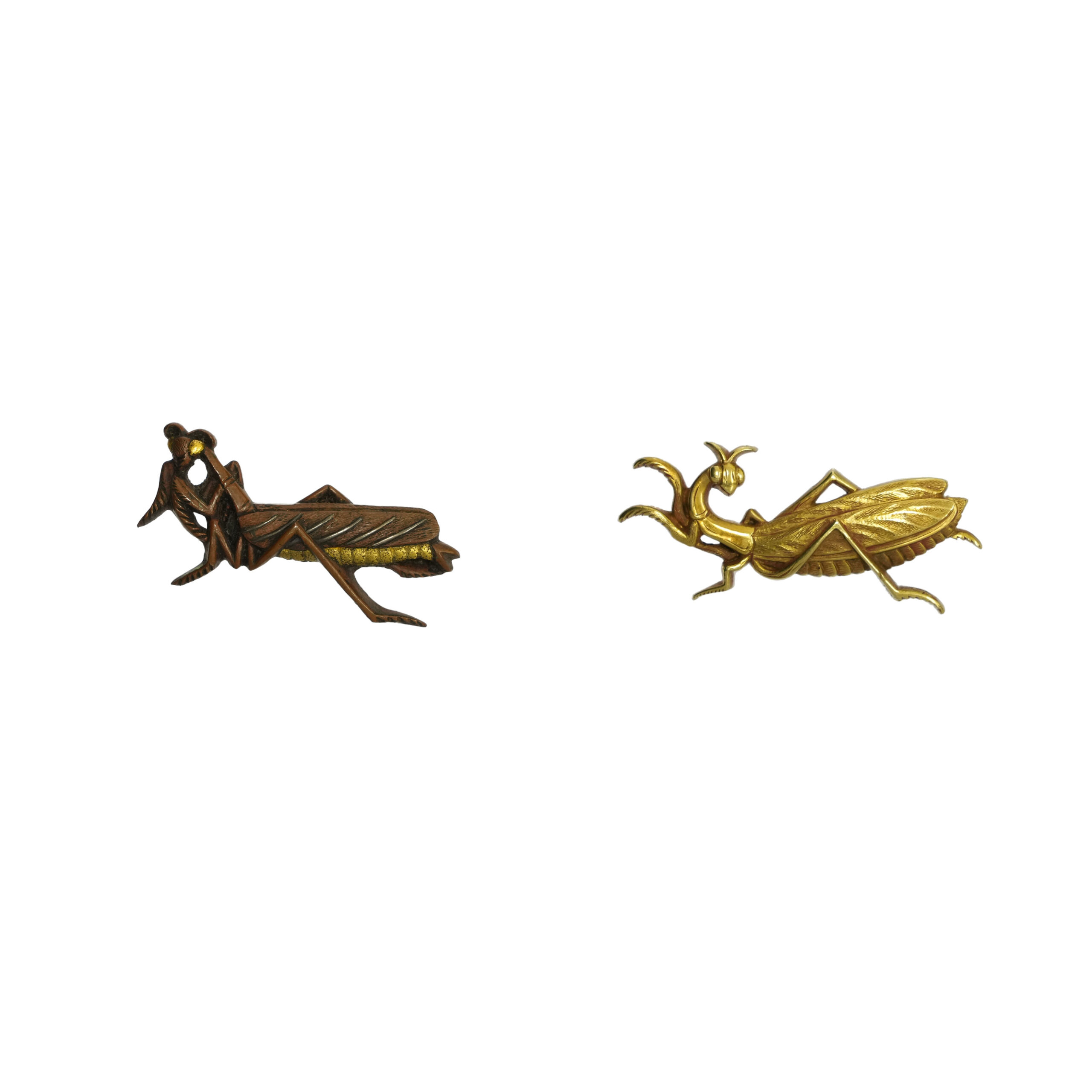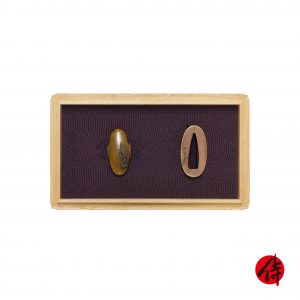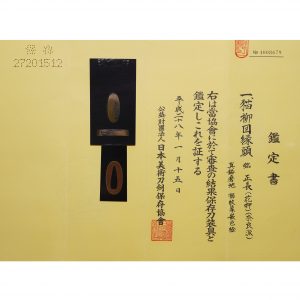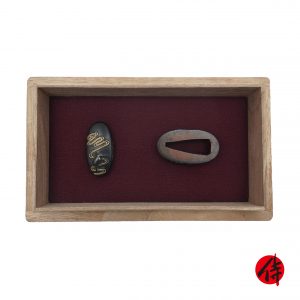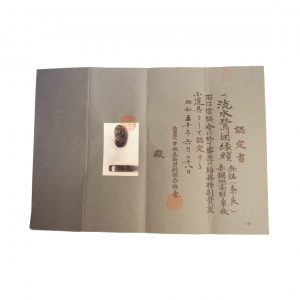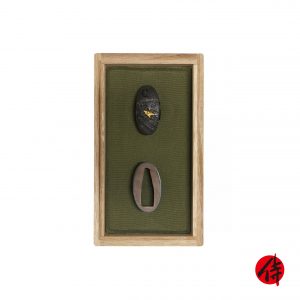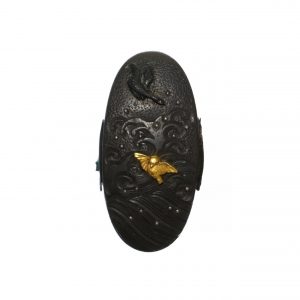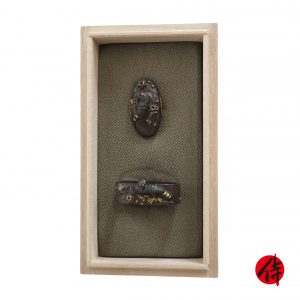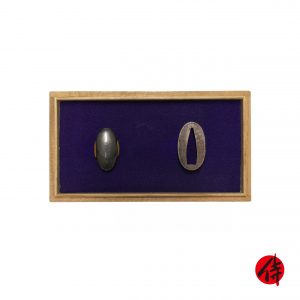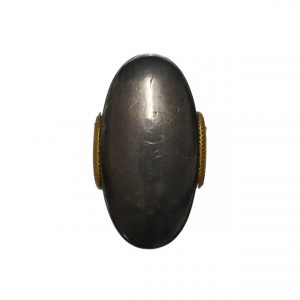Title: Kikyō Karakusa-Zu
Description
Kikyō Karakusa (桔梗唐草) is engraved on this fuchi-kashira (the metal collar and pommel fitting of a Japanese sword handle). The design combines two traditional Japanese motifs: karakusa (唐草, arabesque) and kikyō (桔梗, balloon flower).
The karakusa motif consists of elegantly swirling vines and leaves. This pattern, which originally came to Japan from ancient Chinese decorative arts, was adapted into Japanese aesthetics and became a common motif in sword fittings, textiles, ceramics, and more. In Japanese symbolism, the ever-extending vines of the karakusa are associated with vitality, longevity, and prosperity, reflecting the way ivy or vines grow vigorously and without interruption. It also represents the continuity of generations and family lineage—values deeply rooted in traditional Japanese society.
The kikyō is a delicate, star-shaped flower with five pointed petals, typically blooming in summer to early autumn. It has been loved in Japan since the Heian period (794–1185) and frequently appears in waka and tanka (traditional Japanese poetry), as well as in classical painting. The root of the kikyō plant is known in traditional herbal medicine (kampo) for its medicinal properties, particularly in treating throat and respiratory ailments.
Interestingly, the name “kikyō” was originally written and pronounced as “kichikō” (吉更 or 吉効), and over time it evolved into the current reading. The phonetic similarity between “kichikō” and “kikkyō” (吉凶, meaning “good and bad fortune”) led to the flower being associated with fortune-telling in ancient Japan. The phrase “kikkyō wo uranau” (吉凶を占う) literally means “to divine good or bad fortune,” and it is believed that the flower’s name contributed to its auspicious symbolism. In this context, the kikyō motif came to represent good luck, protection, and positive change.
*As this item is an antique, please check each photo and ensure its condition.
What is Fuchi Kashira?
Fuchi Kashira is a kind of metal fitting of the Japanese sword, which improves the handle’s strength. Fuchi Kashira is a combination of two parts; Fuchi and Kashira. Fuchi was put next to Tsuba (hand-guard), and Kashira was put on the grip bottle. Fuchi Kashira had developed not only its practicality but also beauty for the decoration of the Japanese sword.
Why is it that the sword mounting was important for Samurai?
The sword mountings of the Japanese sword have many kinds of decorations such as handguards (Tsuba), sword hilt (Menuki), pommel (Fuchi Kashira). The Japanese sword worked as a weapon and as an object to show who he was. For example, it shows their personalities and beliefs. You could say that it is like decorations for smartphones today. We recommend you zoom in on the pictures of the sword fittings. When you do so, you can see the skill of Japanese metal engraving techniques. They are mainly made of iron and copper with inlays of gold, silver, and bronze. When it comes to handguard (Tsuba), each one has a different outline and weight. These sword fittings that have lived with Japanese swords of the same age might be worth as much as the Japanese swords. They are inconspicuous parts of the Japanese sword. Nevertheless, if you are knowledgeable or particular about it, you will become a connoisseur of the Samurai.
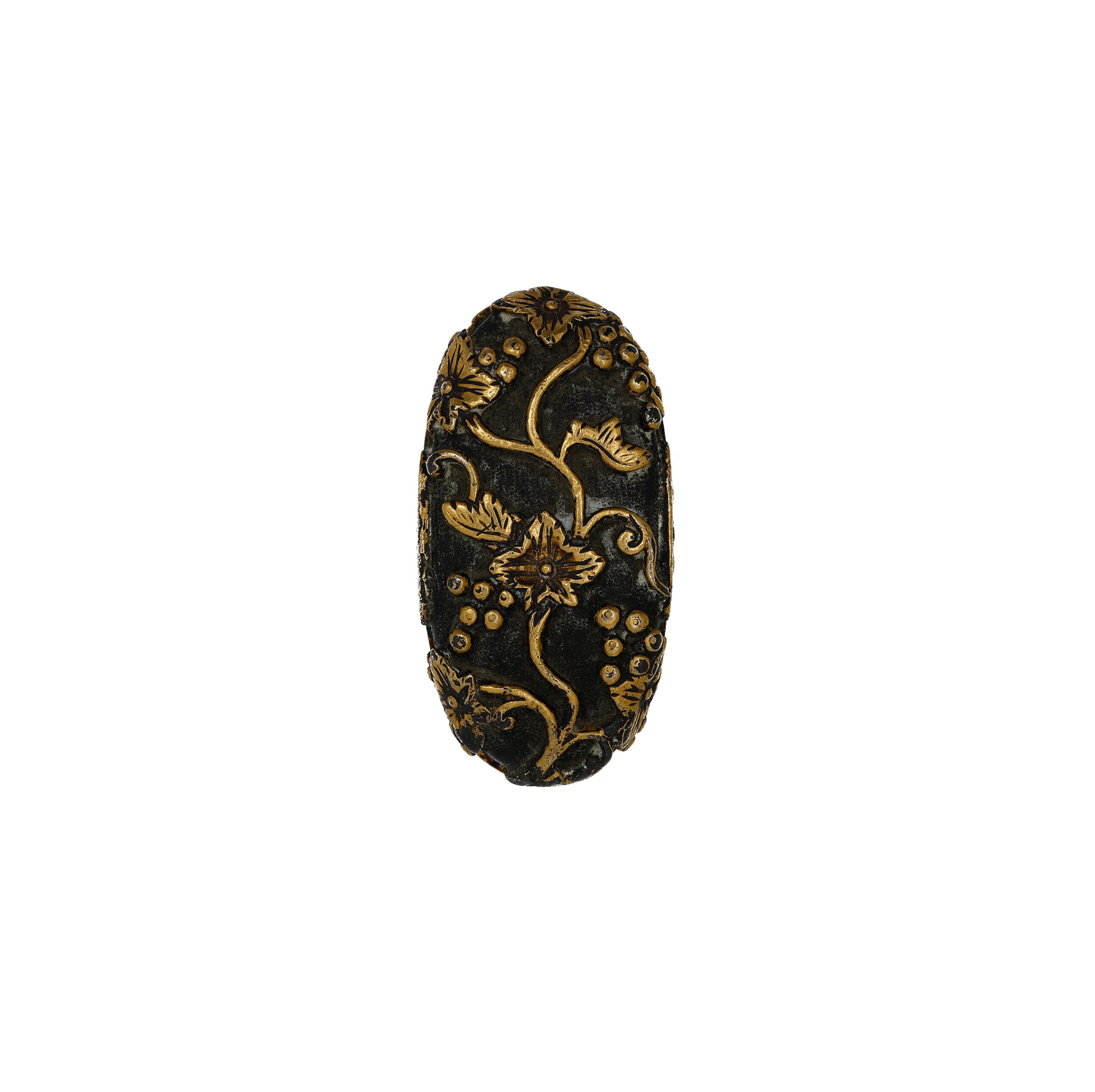
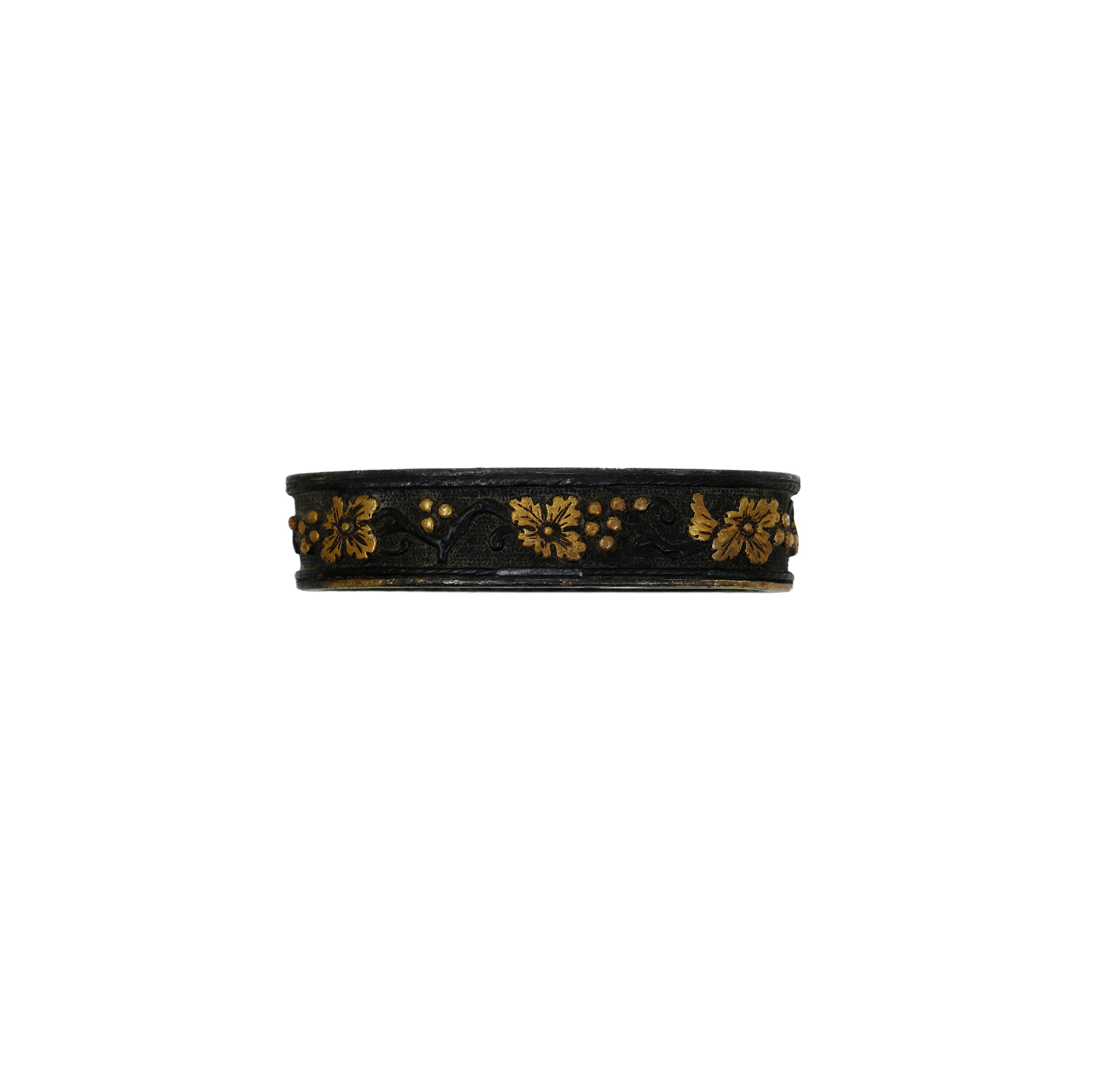
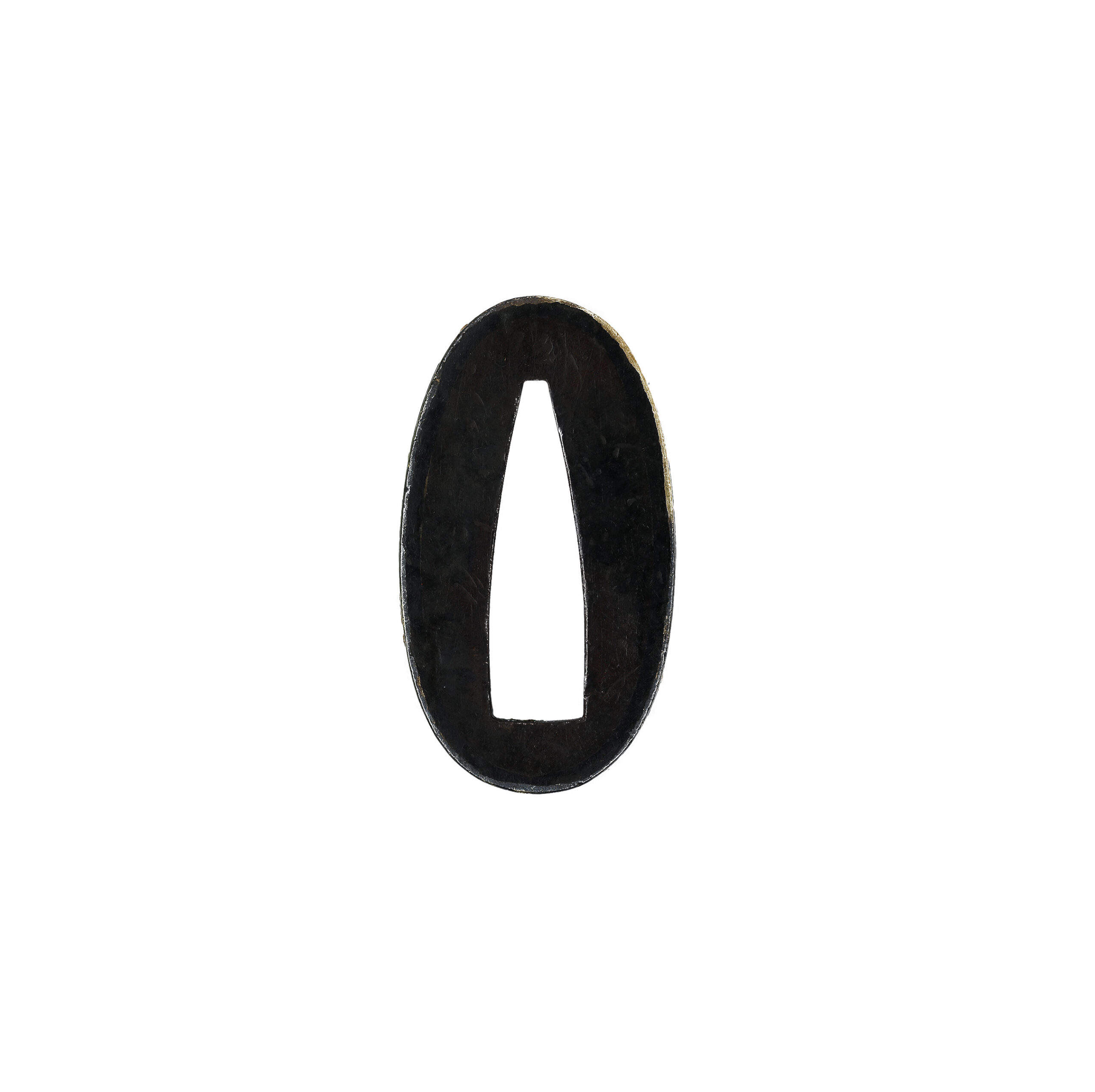
【About us】
Samurai Museum is located in Tokyo, Japan, exhibiting antique artifacts related to the Samurai history. Samurai Museum Shop is the place for those who are interested in Japanese culture and craftsmanship. We deal with antique Samurai swords/armor, traditional crafts made in Japan and so on.
【Payment method】
We accept payment through Stripe (Credit card), PayPal, Apple Pay or ChromePay, all of which are secure payment methods. Also, you don’t need to make an account on Stripe for the checkout. If you prefer other payment method, please contact us. You may either pay in JPY, USD, AUD, CAD, EUR, CHF or GBP. The price is set in Japanese Yen. Prices in other currencies are automatically calculated based on the latest exchange rate.

【Shipping duration】
We normally ship via EMS (Express Mail Service) provided by Japan Post. It usually takes at least 5-14 days to deliver the package after you place an order. Time of delivery is estimated as accurately as possible by the carrier but does not take into account any delays beyond our control such as by inclement weather, post office holiday seasons.
We offer Free International Shipping as long as we can ship your order by EMS. If you prefer other shipping carriers, please contact us.
We will inform you of the order’s tracking number via email. Please make sure you fill out your valid email address correctly.

【How to make sure the condition】
Please keep in mind that what you are going to purchase is an antique item. We uploaded high resolution photos for you to check its condition thoroughly. If you like to see more photos with different angles, please feel free to contact us. We will be happy to send them to you so that you can make informed decision.
It is essential for us to know that you are happy with your choice of Fuchi Kashira and we are prepared to use the best of our ability to serve you.
Would you like see some more Fuchi Kashira for sale? Please check the link below. We hope you can find your favorite Fuchi Kashira.
https://www.samuraimuseum.jp/shop/product-category/decorations/fuchigashira/
